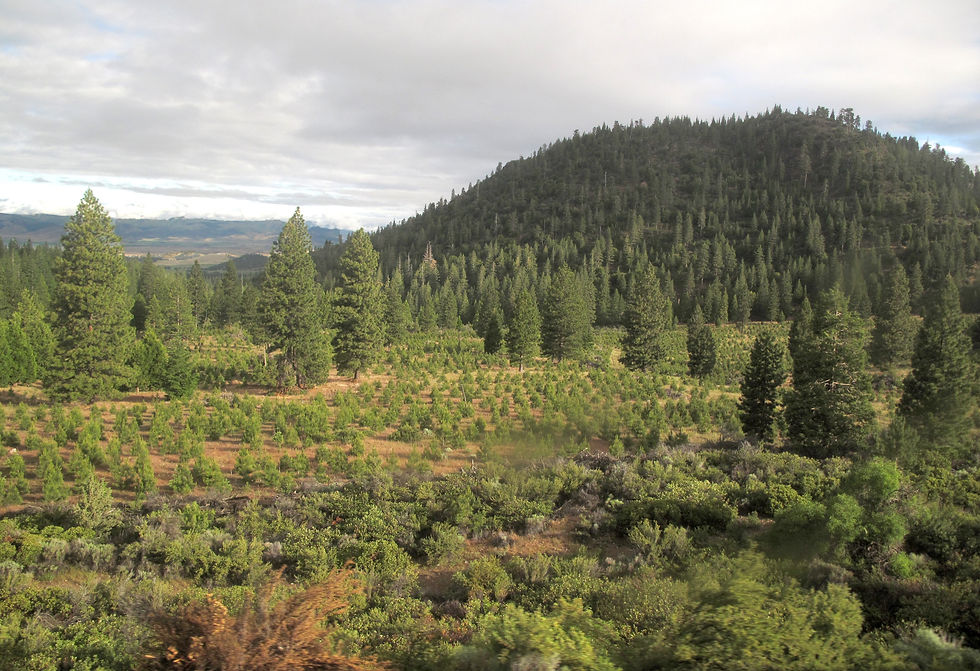Why Regular Land Maintenance Is Crucial
- Shane

- Jul 30
- 3 min read
Owning rural land in southeastern Washington comes with unique responsibilities, especially in wildfire-prone areas. Regular land maintenance is essential to protect your property, enhance its value, and preserve the natural beauty of your surroundings. Proper upkeep helps reduce wildfire risks, maintain healthy ecosystems, and ensure your land remains usable and enjoyable for years to come.

The Importance of Land Maintenance in Wildfire-Prone Areas
Wildfires are a significant threat in southeastern Washington, especially during dry seasons. Maintaining your land regularly can drastically reduce the risk of fire spreading across your property. Removing excess brush, dead trees, and dry debris creates defensible space around your home and structures. This space acts as a buffer zone, slowing down or stopping wildfires from reaching your property.
Regular land maintenance also helps improve air quality and soil health. By managing vegetation growth, you prevent invasive species from taking over and encourage native plants to thrive. This balance supports local wildlife and maintains the natural ecosystem.
Practical Steps for Effective Land Maintenance
Brush and debris removal: Clearing out unwanted brush and dead plant material reduces fuel for wildfires. This process should be done sustainably to avoid harming the environment.
Tree thinning: Removing overcrowded or unhealthy trees improves forest health and reduces fire hazards.
Controlled burns: In some cases, controlled burns can safely reduce excess vegetation.
Trail maintenance: Keeping trails clear and accessible helps with emergency access and recreational use.

For sustainable brush clearing, consider professional services that repurpose removed trees into custom lumber or firewood. This approach minimizes waste and supports local craftsmanship.
How Regular Land Maintenance Enhances Property Value
Well-maintained land is more attractive to buyers and can significantly increase your property's market value. Buyers in rural areas often look for properties that are safe, accessible, and visually appealing. Regular maintenance ensures your land meets these criteria.
Maintaining trails and open spaces also adds recreational value. Whether for hiking, horseback riding, or hunting, accessible land is a major selling point. Additionally, properties with wildfire mitigation measures in place are more likely to receive favorable insurance rates.
Benefits of Sustainable Land Maintenance
Preserves natural resources: Sustainable practices protect soil, water, and native plants.
Reduces long-term costs: Preventative maintenance avoids costly repairs after wildfires or erosion.
Supports local economy: Using removed wood for custom woodworking projects or firewood keeps resources in the community.

How much do landscapers charge for brush removal?
Understanding the cost of professional brush removal helps you budget for regular land maintenance. Prices vary depending on the size of the area, density of vegetation, and the complexity of the terrain.
On average, landscapers charge between $500 and $2,000 for brush clearing services on rural properties. Factors influencing cost include:
Size of the area: Larger areas require more time and equipment.
Type of vegetation: Dense brush or large trees increase labor and disposal costs.
Access to the site: Difficult terrain or remote locations may add to the price.
Disposal methods: Sustainable disposal, such as turning wood into lumber or firewood, might affect pricing but adds value.
Hiring professionals experienced in wildfire mitigation ensures the job is done safely and effectively. They can also advise on ongoing maintenance schedules to keep your land in optimal condition.
Sustainable Practices in Land Maintenance
Sustainability is key when managing rural land. Removing brush and trees without harming the environment preserves the land’s health and beauty. Here are some sustainable practices to consider:
Repurposing wood: Trees removed during maintenance can be milled into custom lumber or split into firewood, reducing waste.
Selective clearing: Focus on removing only hazardous or invasive plants while preserving native species.
Erosion control: Use natural barriers and plant cover to prevent soil erosion after clearing.
Wildlife habitat preservation: Maintain areas that provide shelter and food for local wildlife.
By choosing sustainable land maintenance, you contribute to the long-term health of your property and the surrounding ecosystem.
Maintaining Trails and Access Roads
Trails and access roads are vital for both everyday use and emergency situations. Regular maintenance keeps these paths clear and safe. This includes:
Removing fallen branches and debris
Grading and leveling uneven surfaces
Controlling invasive plants along the edges
Installing drainage solutions to prevent water damage
Well-maintained trails improve your enjoyment of the land and provide critical access for firefighting and emergency services.
Final Thoughts on Land Maintenance for Rural Properties
Regular land maintenance is not just about aesthetics - it is a crucial part of protecting your property and investment. In wildfire-prone areas like southeastern Washington, proactive measures can save lives and reduce damage. Sustainable practices ensure your land remains healthy and productive for generations.
If you need professional help with brush clearing, wildfire mitigation, or custom woodworking projects, consider partnering with experts who understand the unique challenges of rural land management. Taking care of your land today means a safer, more beautiful tomorrow.





Comments